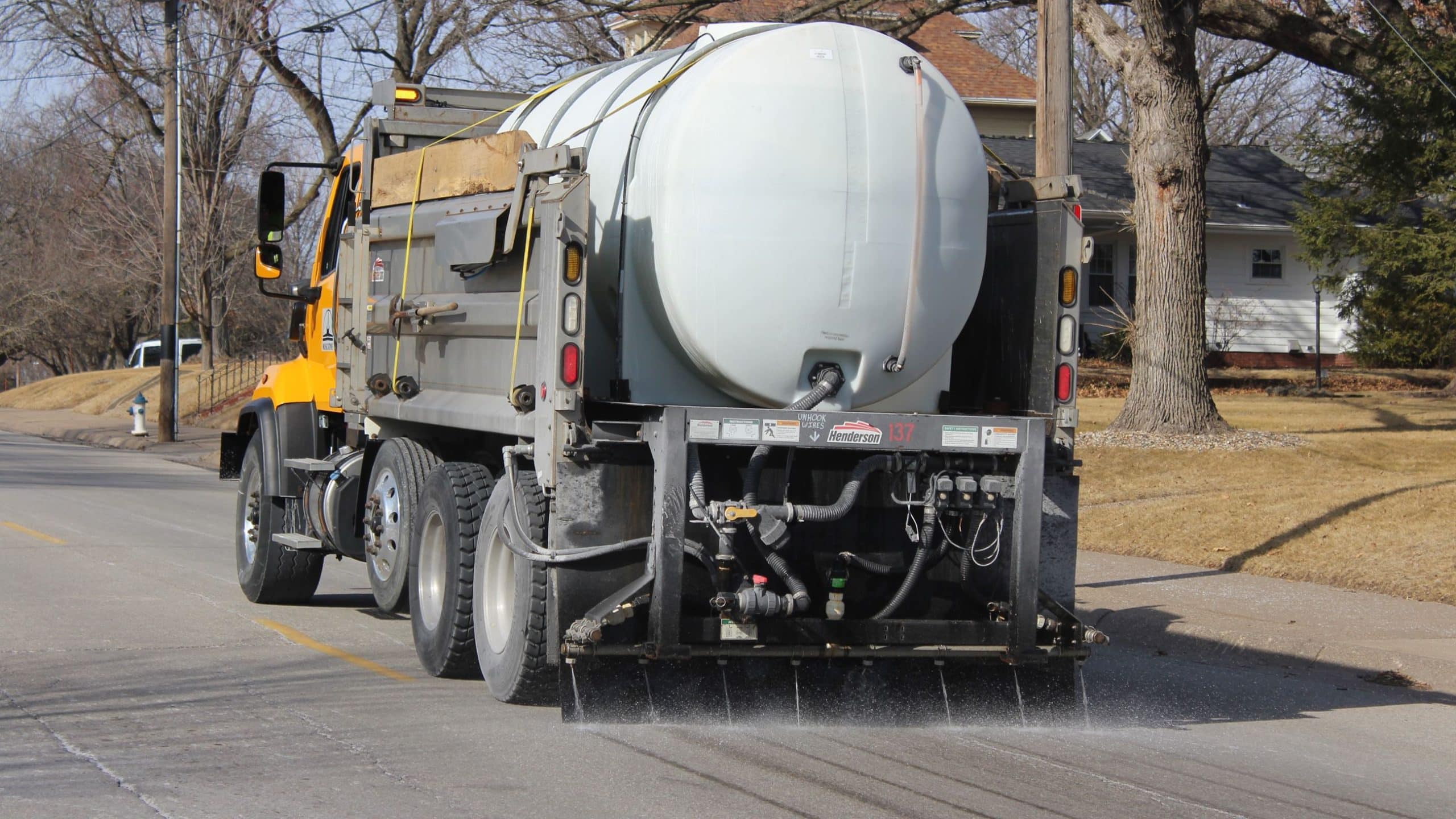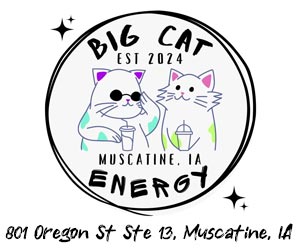City crews were spreading salt brine on city streets Monday and Tuesday in preparation for a winter storm that is expected to impact the area Wednesday. The salt brine is first applied to hills and intersections, and then to emergency routes with some side streets also being treated as time allows.
The use of salt brines does not cause slippery roads according to the American Association of State Highway and Transportation Officials (AASHTO), but do enhance road safety and mobility during winter weather and are a clear benefit to the traveling public.
Preparations for the incoming winter storm were also underway at the Department of Public Works facility earlier this week as snow plow blades were fitted onto City trucks and the dump body of the trucks was filled with rock salt.
“We have not had to put on the blades yet this winter except to test them early on,” Tyson Wedekind, Street Maintenance Supervisor, said. “The first step was to prep the streets as best we can with the brine and then make sure the trucks are ready to go out once the snow starts falling.”
Previous winter weather events this season were handled with the application of the salt brine before the event, and the spreading of rock salt as the event occurred and after the event as needed.
Salt brine is a solution of salt and water. It has a freezing point lower than pure water and, as such, is a useful tool in reducing the adhesion of snow and ice to road surfaces.
“The brine will remain on the road and start to interact with the falling snow once the weather event begins,” Wedekind said. “The interaction keeps the snow and ice from sticking to the roadways and that makes the streets a lot easier to clear.”
According to the American Public Works Association (APWA), anti-icing is a proactive approach taken to decrease the likelihood of snow and ice bonding to a pavement surface. Anti-icing involves placing a layer of brine on the surface of the pavement before a winter storm has begun. This layer prevents the snow and ice from freezing to (or icing onto) the road.
The alternate method is called deicing, which allows the snow to bond with the road and then applying a pre-wetted rock salt to break the bond between the snow and the pavement.
“We prefer anti-icing because it uses less salt than deicing,” Wedekind said. “It costs us about 11 cents per gallon to make and we typically use 6,000-8,000 gallons to treat the streets before a storm.”
The brine does not freeze on the roads as it is applied and will not freeze until temperatures fall to -6 degrees Fahrenheit or below. However, as the snow and ice melts and the brine becomes more diluted the road will refreeze eventually – unless other treatments are made or the road is cleared of snow and ice by plowing.















